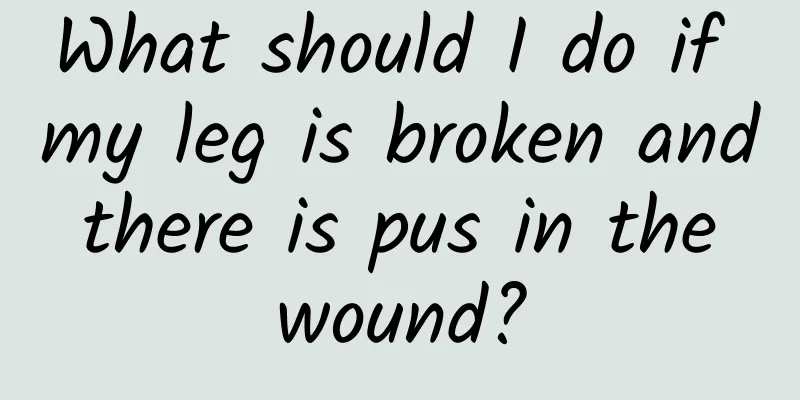Diffuse thyroid disease

|
Diffuse thyroid disease is a common nodular disease. The onset of diffuse thyroid disease can cause great distress to the patient's body and mind. Medicine is also conducting many aspects of research on this type of diffuse thyroid disease. It can be said that for modern medicine, if the cause and treatment of diffuse thyroid disease can be broken through, then the pain of many people can be greatly reduced. So what is diffuse thyroid disease? What are the hazards of diffuse thyroid disease? How is this disease defined clinically? If you are unfortunately diagnosed with this disease, how should you treat it?Introduction: Common types of diffuse thyroid lesions in clinical practice are nodular goiter (hereinafter referred to as nodular goiter), thyroid cancer (hereinafter referred to as thyroid cancer), Hashimoto's thyroiditis (hereinafter referred to as Hashimoto's disease), Graves' disease, etc. Since the treatment plans for different diseases are different, it is necessary to make a qualitative diagnosis of such diseases before treatment. The author collected thyroid CT images of 50 cases of the above diseases for retrospective analysis, focusing on the CT diagnosis and differential diagnosis of each disease. CT diagnosis Objective To analyze the CT imaging manifestations of diffuse thyroid lesions in order to obtain the key points of CT differential diagnosis of various diffuse thyroid lesions. Materials and Methods The CT data of 50 cases with diffuse thyroid diseases were retrospectively analyzed. All 50 cases underwent plain scan and 45 cases underwent enhanced scan. Thin layer target scanning is used for multi-window position and multi-window width observation. Results (1) In 12 cases of Hashimoto's disease and 10 cases of Graves' disease, both lobes of the thyroid gland showed diffuse symmetrical or almost symmetrical enlargement with uniformly reduced density and no lower density nodules within the gland. Four cases of Hashimoto's disease had high-density nodules in the gland; (2) Nodular goiter had enlargement of both lobes of the thyroid gland and multiple lower-density nodules in the gland, which were more uniform in size and distribution than those of thyroid cancer; (3) Thyroid cancer had interrupted glandular margins, destruction of extraglandular structures, vascular enhancement of nodules on the wall of the cystic area, and enlarged cervical lymph nodes. Conclusions There are many common CT features in the same type of diffuse thyroid lesions, and different types of thyroid lesions also have different CT features. Understanding the CT features of each disease is helpful for diagnosis and differential diagnosis. The flexible use of CT scanning and image processing technology is of great significance for the diagnosis and differential diagnosis of diffuse thyroid lesions. Common types of diffuse thyroid lesions in clinical practice are nodular goiter (hereinafter referred to as nodular goiter), thyroid cancer (hereinafter referred to as thyroid cancer), Hashimoto's thyroiditis (hereinafter referred to as Hashimoto's disease), Graves' disease, etc. Since the treatment plans for different diseases are different, it is necessary to make a qualitative diagnosis of such diseases before treatment. The author collected thyroid CT images of 50 cases of the above diseases for retrospective analysis, focusing on the CT diagnosis and differential diagnosis of each disease. 1 Materials and methods In this group of 50 cases, thyroid lesions were diffusely distributed in more than one lobe, and the tumors in the glands of cases with nodules and thyroid cancer were multiple (cases that did not meet these conditions were not included in this group). Among the 50 cases, there were 14 cases of nodular goiter (male:female ratio was 4:10), 14 cases of thyroid cancer (male:female ratio was 8:6, including 10 cases of papillary adenocarcinoma and 4 cases of follicular adenocarcinoma), 12 cases of Hashimoto's disease (male:female ratio was 8:4), and 10 cases of Graves' disease (all females). Age range: 24 to 64 years old. Except for 5 cases of Graves' disease and 2 cases of Hashimoto's disease which were confirmed by clinical and laboratory examinations, the remaining cases were confirmed by pathology. All cases were scanned with Shimadzu SCT-4500TE whole-body CT machine. Five cases of Graves' etiology had obvious symptoms of hyperthyroidism and no enhancement was performed. The remaining 45 cases were all examined by plain scan and enhanced scan strictly according to the following scanning and imaging techniques: ① Both plain scan and enhanced scan were performed with a continuous scan with a slice thickness and slice spacing of 5 mm; ② The thyroid structure was placed in the center of the scanning field for target scanning, and the condition was met to simultaneously display the thyroid structure within 2 cm and the cervical sheath area, and the scanning field was minimized to maximize the image quality in the target area; ③ The enhanced scanning images were observed and photographed using a high window position and narrow window width that were conducive to displaying lesions within the thyroid gland, and a slightly lower window position and wide window that were conducive to displaying adjacent structures outside the thyroid gland. The former window position is based on the CT value of the highest density area of the thyroid gland, and the window width is 150-200HU; the latter window position is based on the density of the sternocleidomastoid muscle, and the window width is 250-450HU. 2 Results 2.1 Nodular goiter 14 cases. Both plain scan and enhanced scan showed that both lobes and isthmus of the thyroid gland were symmetrically or almost symmetrically enlarged, with density reduced to varying degrees and extremely uneven. All 14 cases had multiple, evenly distributed, lower-density nodules in the glands. The nodules ranged in size from 1 to 3 cm, but most were about 1 cm in diameter. The density of the solid nodules was uneven and the edges were blurred. In 8 cases, some nodules had large-scale cystic changes, and in 4 cases, the edges of the cystic changes had mural nodules protruding into the cystic cavity, but no obvious high-density enhancement of the mural nodules was observed. In 5 cases, the nodular lesions adjacent to the edge of the gland caused local bulging of the edge of the gland. However, in none of the 14 cases were there any signs of destruction or interruption of the connection line of the gland edge, destruction of the adjacent extraglandular structure, or enlarged lymph nodes. Six cases had multiple punctate or coarse irregular calcifications in the thyroid gland. Knot armor. Plain scan shows diffuse symmetrical enlargement of the thyroid gland, uneven decrease in density, uniform size and distribution of low-density nodules within the gland, some nodules cystic, and mural nodules within the cysts 1 case. Enhanced scanning shows no obvious enhancement of the wall nodules in the cystic area, the edges of the solid nodules are still unclear, and the thyroid margin connection is complete 2.2 Thyroid cancer 14 cases. Both plain scan and enhanced scan showed obvious asymmetric diffuse enlargement of the gland, uneven decrease in density and multiple lower density tumors (nodules or masses) in the gland. The tumors are mainly solid with uneven density, blurred edges, and diameters ranging from 0.8 to 4.5 cm. Their size and distribution are more uneven than those of nodules. Among the 10 cases of papillary carcinoma, 6 had varying degrees of cystic changes in some of the tumors, 4 of which had wall nodules in the cystic areas, and 1 had a wall nodule that showed high-density vascular enhancement, with a local CT value of 110HU. In 12 cases, the tumors partially adjacent to the edge of the gland destroyed the glandular capsule, resulting in the interruption or disappearance of the connection line of the local glandular edge, which the author called the "segmental defect sign". In 9 cases, the tumors also destroyed adjacent extra-glandular structures such as the trachea, esophagus, cervical sheath vessels, anterior cervical muscles, and sternal manubrium. Superficial and deep cervical lymphadenopathy were observed in 10 cases, 2 of which showed cystic changes, and no mural nodules were observed. The lesion area of 7 cases had granular or irregular calcification. Thyroid cancer. Plain scan and enhanced scan) showed asymmetric enlargement of the thyroid gland, uneven decrease in density, destruction of the glandular capsule of the right lobe, interruption or disappearance of the local gland edge connection line (segmental defect sign), and destruction of adjacent structures (trachea, esophagus, etc.) Another case of thyroid cancer showed asymmetrical enlargement of the gland, decreased density, and a low-density mass in the gland that interrupted the line connecting the edge of the left lobe of the thyroid gland (segmental defect sign). The above is a brief introduction to the symptoms, hazards, causes, and diagnostic methods of diffuse thyroid disease. In fact, illness is like a mountain falling. What healthy people can do is to pay more attention to their bodies in daily life. If there are any problems with the body, timely treatment is the best way to reduce pain. |
Recommend
How to make delicious sweet potatoes, new ways to eat delicious sweet potatoes
Sweet potatoes are a common food in daily life. T...
Loratadine tablets are a great way to relieve allergies, but you have to take them this way
Allergies are now a very common phenomenon. Both ...
Acupoint health care is not that simple
Among the health-preserving craze that has become...
What container is better for stewing Chinese medicine?
We have all taken Chinese medicine in our daily l...
Treatment of drug extravasation
Letting the drug enter our body through infusion ...
What does esophageal reflux look like? Symptoms of esophageal reflux
Esophageal reflux is also known as gastroesophage...
Acupuncture points for lowering blood pressure
Our body's blood pressure fluctuates within a...
What are the top ten forbidden vegetables for pregnant women?
Women need to pay special attention to their dail...
How to quickly relieve fever and headache?
As soon as autumn comes, the weather starts to be...
Hyperactive bone marrow
Everyone knows that the bone marrow has the funct...
What foods are good for myocardial ischemia?
People with myocardial ischemia should eat scient...
Why are my calves cold in summer?
In the summer, if your calves are cold, the most ...
What causes peeling feet?
Everyone wants their skin to be smooth and firm, ...
What causes lower abdominal pain after sex?
Some women will experience lower abdominal pain a...
How to take creatine to achieve obvious effects
Creatine is a nitrogen-containing organic acid. A...









